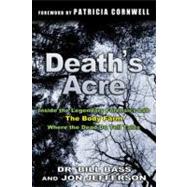
| Foreword by Patricia Cornwell | ix | ||
| 1. The Bones of the Eaglet | 1 | (12) | |
| 2. Dead Indians and Dam Engineers | 13 | (20) | |
| 3. Bare Bones: Forensics 101 | 33 | (13) | |
| 4. The Unsavory Uncle | 46 | (13) | |
| 5. The Case of the Headless Corpse | 59 | (13) | |
| 6. The Scene of the Crime | 72 | (16) | |
| 7. Death's Acre: The Body Farm Is Born | 88 | (10) | |
| 8. A Bug for Research | 98 | (13) | |
| 9. Progress and Protest | 111 | (10) | |
| 10. Fat Sam and Cadillac Joe | 121 | (11) | |
| 11. Grounded in Science | 132 | (13) | |
| 12. The Zoo Man Murders | 145 | (27) | |
| 13. Parts Unknown | 172 | (19) | |
| 14. Art Imitates Death | 191 | (9) | |
| 15. More Progress, More Protest | 200 | (9) | |
| 16. The Backyard Barbecue | 209 | (14) | |
| 17. The Not-So-Accidental Tourist | 223 | (14) | |
| 18. The Bloody Beneficiary | 237 | (18) | |
| 19. Ashes to Ashes | 255 | (21) | |
| 20. And When I Die | 276 | (5) | |
| Appendix I: Bones of the Human Skeleton | 281 | (4) | |
| Appendix II: Glossary of Forensic and Anthropological Terms | 285 | (6) | |
| Acknowledgments | 291 | (4) | |
| Index | 295 |
The New copy of this book will include any supplemental materials advertised. Please check the title of the book to determine if it should include any access cards, study guides, lab manuals, CDs, etc.
The Used, Rental and eBook copies of this book are not guaranteed to include any supplemental materials. Typically, only the book itself is included. This is true even if the title states it includes any access cards, study guides, lab manuals, CDs, etc.